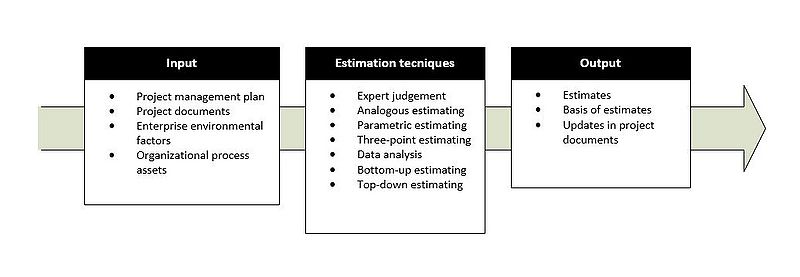Basic estimation techniques
Contents |
Abstract
When managing a project, a manager has to achieve specific objects within time, resources and money. This can often be challenging, as there is a lot of uncertainty in doing so. How can the amount of time for each activity be calculated? How many resources are needed to complete every task? And how much will the project cost in the end? This article deals with answering all these questions and focuses on how to come up with educated guesses to these uncertainties.
In the first section, a definition of what an estimate is will be given. A variety of best practices used in the estimation process will then be presented. Some of these techniques are more complex than others and will therefore require a more detailed explanation. For every presented technique, advantages and disadvantages, as well as examples on how to apply these, will be given in order to give the reader an understanding of how the methods works and what they can be used for.
Lastly, the challenges and limitations of using these tools will be discussed, as these can variate in accuracy depending on the size and the type of the projects. The involved risks when estimating will also be covered here.
Definition and techniques
The process of estimating is a common practice within Project Management of finding an approximation to a specific value that is not known. An estimation can serve different purposes, for example give an indication of the duration for a specific activity, or the amount of resources that must be assigned to a task in order to complete in time. The process of estimating can be represented as an input/output model.
Estimation are based on different inputs. These can be components from the project management plan as the scope baseline; project documents, for example list of activities, assumptions log, resource requirements, register for learned lessons; enterprise environmental factors as market conditions, organizational culture, resource availability; and organizational process assets as policies, scheduling methods and historical data from similar projects.
The result of the estimation process, the output, are of course the calculated estimates and the detailed documentation that supports the approximation. Furthermore, as a result of carrying out the estimation process, some project documents may be updated.
There exist different estimation techniques. It is important to mention that these techniques are not only limited to the planning phase but can be used throughout the whole project . This chapter will describe some of the most used techniques in managing projects and give examples of their application.
Expert judgement
This method is quite simple and consists in obtaining the judgment of a group or a person with specialized education, knowledge, skill, experience, or training, in the activity being performed. These experts can either be provided in the corporation, or by turning to a professional consulting agency.
A well-known method is the Delphi technique. According to Dalkey and Helmer (1962) , the purpose of this method is to obtain the most reliable consensus of opinion from a panel of selected experts, by questioning them individually around a central subject (the value to be estimated in this case) in a series of rounds, without having the experts confronting each other directly. After every iteration, a facilitator presents all the answers are presented to the group anonymously, thus encouraging the experts to revise their judgement, based on factors other have brought up and that they maybe did not considered. At the end of the process the answers are expected to converge towards a reliable and unbiased estimate for the searched value.
Analogous estimating
Parametric estimating
Three-point estimating
Data analysis
Decision making
Meetings
Learning curve
Simulation
Bottom-up and top-down estimating
Discussion on estimating
Bla bla bla
References
Bla bla bla
